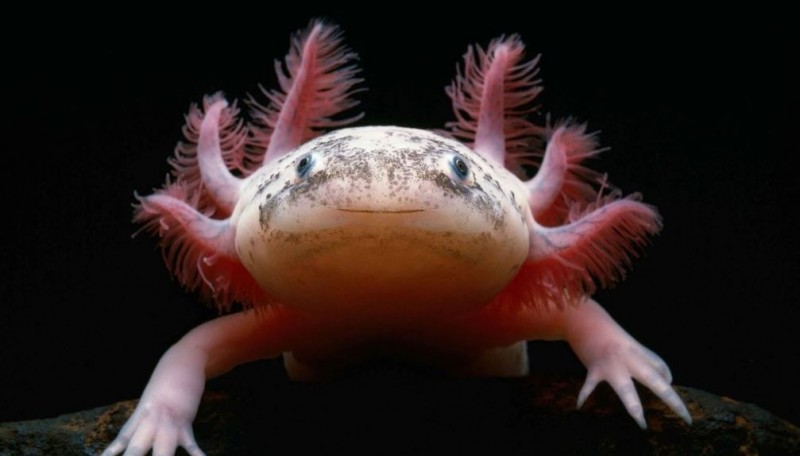
The axolotl, also known as the Mexican walking fish, has captivated scientists and nature enthusiasts alike with its extraordinary regenerative abilities. This remarkable amphibian possesses the unique power to regrow lost body parts, including limbs and organs. In this article, we will delve into the fascinating world of the axolotl, exploring its regenerative prowess, the underlying mechanisms behind this ability, and the potential implications for human medicine.
1. Introduction: Unveiling the Axolotl
The axolotl (Ambystoma mexicanum) is a unique amphibian species native to the Xochimilco lakes in Mexico. This small aquatic creature has captured the attention of scientists due to its incredible ability to regenerate damaged or lost body parts, a characteristic rarely seen in the animal kingdom. Its endearing appearance, with feathery gills and a perpetually smiling face, adds to its appeal and popularity as a pet and a subject of scientific study.
2. The Wonders of Axolotl Regeneration
The axolotl's regenerative abilities extend far beyond the ability to regrow a simple tail or a limb. In fact, this remarkable creature can regenerate complex structures such as spinal cord tissue, heart muscle, and even portions of its brain. This exceptional capability has sparked considerable interest among researchers who are eager to uncover the underlying mechanisms that allow for such remarkable regeneration.
3. The Regeneration Process Unveiled
The process of axolotl regeneration involves a series of intricate biological events orchestrated by a complex interplay of genetic and cellular factors. When a limb or an organ is lost or injured, specialized cells known as blastemal cells gather at the site of injury, forming a mass of undifferentiated cells called the blastema. The blastema serves as a reservoir of regenerative potential, providing the necessary building blocks for the regrowth of the missing body part.
4. Unraveling the Genetic Blueprint
The axolotl's extraordinary regenerative abilities are partly attributed to its unique genetic makeup. Researchers have identified key genes and genetic pathways that play pivotal roles in the regeneration process. By studying these genetic blueprints, scientists hope to unlock the secrets of tissue regeneration in humans and develop new therapeutic approaches for treating injuries and diseases that currently have limited treatment options.
5. The Cellular Dance: Proliferation and Differentiation
Cellular processes such as cell proliferation and differentiation are vital components of axolotl regeneration. Proliferation involves the rapid multiplication of cells in the blastema, while differentiation guides these cells to develop into the specific cell types needed to rebuild the lost body part. The precise coordination of these cellular events is crucial for successful regeneration and underscores the complexity of the axolotl's regenerative process.
6. Nerve Regeneration: A Neurobiological Marvel
One of the most astonishing aspects of axolotl regeneration is its ability to regrow functional nerves and restore sensory connections. Unlike humans, whose damaged nerves often lead to permanent loss of sensation or function, axolotls can repair and regenerate their nerve tissue, restoring normal functionality. The study of axolotl nerve regeneration holds immense promise for advancing our understanding of nerve repair in humans and developing new therapies for nerve injuries.
7. Axolotl vs. Humans: Lessons for Medical Science
The axolotl's regenerative capabilities offer valuable insights for human medicine. By unraveling the mechanisms that govern axolotl regeneration, scientists can gain a deeper understanding of the regenerative potential that lies dormant within our own bodies. This knowledge may pave the way for innovative regenerative therapies that could transform the treatment of injuries, diseases, and disabilities in humans, revolutionizing the field of medicine as we know it.
8. Promising Applications in Regenerative Medicine
The axolotl's regenerative abilities hold great promise for a wide range of applications in regenerative medicine. From regrowing damaged tissues and organs to developing new strategies for wound healing, the insights gained from studying the axolotl's regenerative process can inspire novel therapeutic approaches. Researchers are actively exploring these possibilities, with the hope of translating their findings into practical clinical solutions.
9. Challenges and Future Directions
While the axolotl's regenerative abilities offer tremendous potential, several challenges lie ahead. Scientists are still working to fully understand the complex cellular and molecular processes that drive axolotl regeneration. Additionally, ethical considerations and environmental factors need to be carefully addressed to ensure the preservation of the axolotl's habitat and the sustainability of research efforts. Continued exploration and collaboration among scientists, policymakers, and conservationists are crucial to overcome these challenges and unlock the full potential of axolotl regeneration.
10. Ethical Considerations
As the field of regenerative medicine progresses, it is essential to consider the ethical implications surrounding the use of animals like the axolotl in research. Striking a balance between scientific advancement and the responsible treatment of animals is of utmost importance. Scientists and policymakers must work together to establish guidelines and regulations that ensure ethical practices while enabling groundbreaking discoveries in regenerative medicine.
11. Preserving the Axolotl's Habitat
The axolotl's native habitat, the Xochimilco lakes, faces numerous environmental threats, including pollution, habitat destruction, and the introduction of non-native species. Conservation efforts are crucial to protect this unique ecosystem and ensure the survival of the axolotl in its natural environment. By raising awareness, implementing sustainable practices, and supporting conservation initiatives, we can contribute to the preservation of the axolotl's habitat and safeguard its future.
12. Conclusion
The axolotl's remarkable regenerative abilities have fascinated scientists and nature enthusiasts for generations. Its ability to regenerate lost body parts, including limbs and organs, offers a glimpse into the incredible regenerative potential of living organisms. By studying the axolotl's regenerative process, researchers hope to unlock the secrets of tissue repair and regeneration in humans, paving the way for groundbreaking advancements in regenerative medicine.
India's Space Program Soars, ISRO Inspires Scientific Advancement